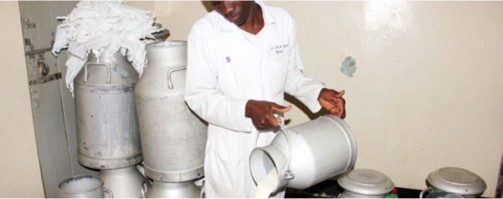Mr Stanley Ntungire is the last of a dying breed. Born and raised in a cattle-keeping orthodoxy that is the age-old tradition of the Hima people of Ankole, he saw his forbearers rear the animals as a principal economic activity. They were a treasured source of prestige in society in a way few things compare.
But Mr Ntungire has had to break from this tradition and explore other farming activities that, if his ancestors were to return, would find strange.
The 37-year-old, having encountered sustainability challenges in his family’s farming operation, is discarding old notions in a bid to adjust to new realities.
The farm, located in the Lwamwanja area of Kamwenge District, now barely boasts 40 heads of mainly hybrid cattle, a far cry from hundreds of local Ankole breeds held by his father and grandfather before him. And for most planting seasons, Mr Ntungire actively engages in cultivation of maize and beans. That’s on top of a sizeable banana plantation he maintains.
“I do this to survive because it’s no longer possible to depend on cattle alone. In times of plenty when milk prices are low, the other products support me,” Mr Ntungire said in a January 11 interview, adding that farming now requires one to earn from various streams to be sustainable.
To this end, Mr Ntungire has even been warming up to the idea of introducing beef breeds of cattle in a bid to mitigate losses that ensue during flash seasons. For, unlike milk, beef does not suffer acute fluctuations in price.
Source of worry
This dynamic though, is becoming a source of worry for researchers, not least those at the National Agriculture Research Organisation’s (Naro) Mbarara Zonal Agricultural Research and Development Institute.
South-western Uganda, the main cattle corridor in the country, has seen an emerging trend of dairy farmers looking to switch to beef cattle rearing, according to Mr Halid Kirunda, the zonal agency’s director of research.
“Some people are erroneously starting to abandon dairy production in favour of beef production, which is really a little bit non-impressive because you are very much aware that for about 15 years, people have been investing in dairy production and so we would assume that at this time, they would be starting to get rewards of that investment,” Mr Kirunda said in a telephone interview.
Milk yields have risen to an average of 9.6 litres per day from 5.2 litres a decade ago, Naro data shows. This compares with an ideal average target of 15 litres per day, even as cattle livestock numbers held on farms in the region have fallen from an average of 200 to 80 heads, the same data shows. About 70 percent of these are cross and purebred, with Ankole the remainder.
On the back of improving yields, the region has attracted investments in milk processing plants by entities, including Pearl Dairy Farms Ltd of the Lato Milk brand and Dairy Corporation—part of Kenya’s Brookside Dairies. A major exit by farmers from dairy and the resulting reduction in quantities could put such establishments at risk by straining already inadequate supplies, according to Mr Kirunda.
“Some people have also invested in processing plants and yet the performance or the production of those processing plants is still sub-optimal,” Mr Kirunda said, adding, “So we would still be talking of increased milk production in order to sustain the capacity of processing in these plants. The level of processing in those plants is still suboptimal.”
Source : Monitor Jan 22nd 2023

